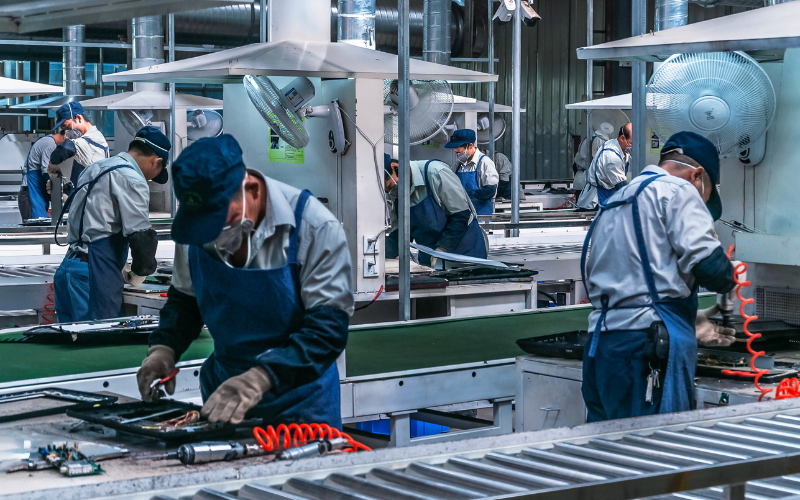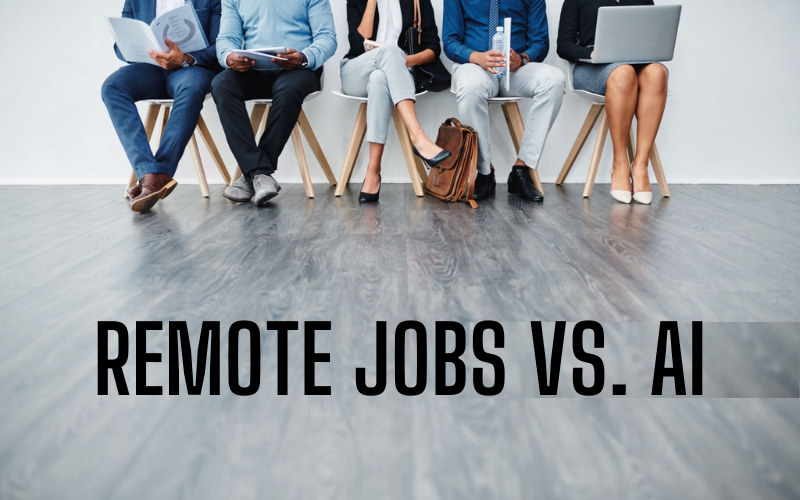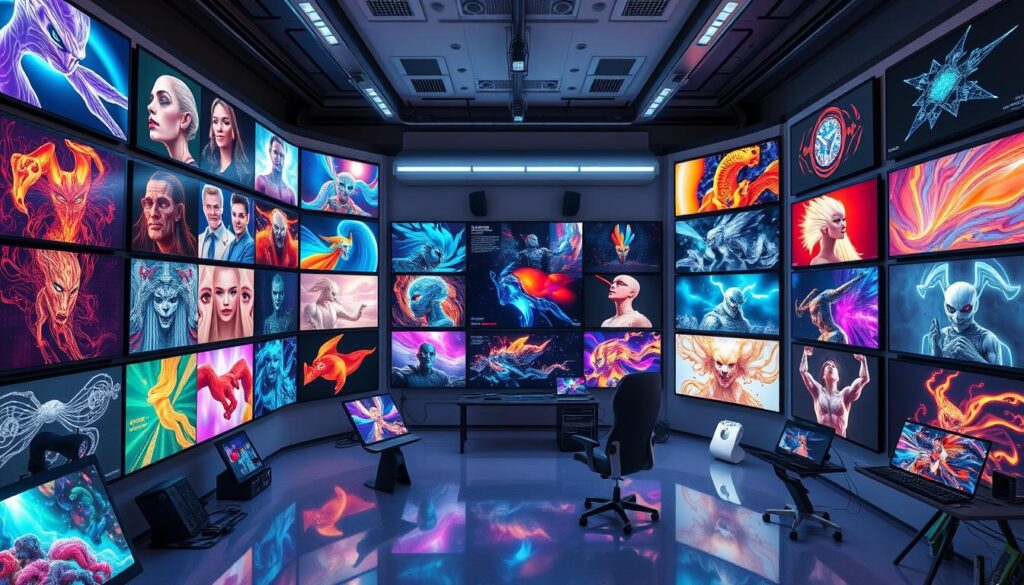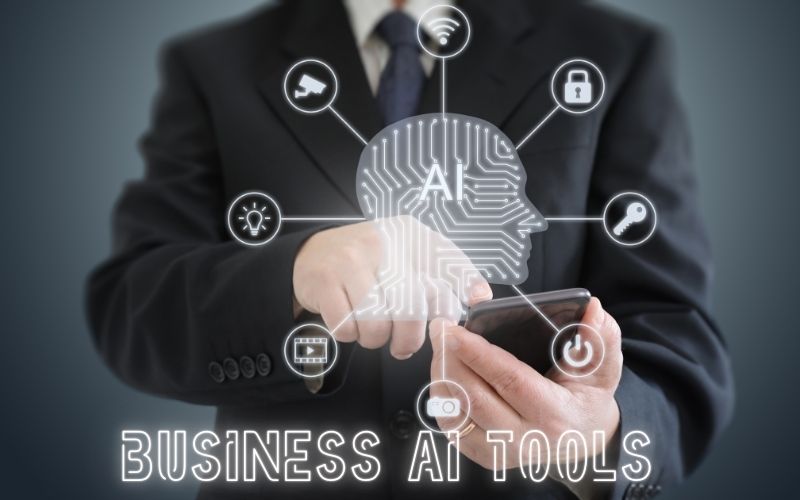The customer service industry has undergone significant changes with the advent of artificial intelligence (AI) technology. AI has the ability to automate and streamline various customer service processes, leading to concerns about its impact on traditional jobs in the industry.
One area where AI has made a considerable impact is in the field of chatbots. Chatbots are virtual assistants that can interact with customers, addressing their queries and providing relevant information. These automated systems use AI algorithms to understand customer needs and respond accordingly. Chatbots have become increasingly popular as they offer immediate assistance, reducing the need for human intervention.
Table of Contents
ToggleThe Impact of AI on Traditional Jobs in the Customer Service Industry
While chatbots have simplified customer service interactions, there are concerns about the potential loss of jobs. With AI becoming more advanced, companies are increasingly incorporating chatbots into their customer service strategies. This shift has led to a decrease in the demand for human customer service representatives, as many routine inquiries can be handled by AI-powered chatbots.
However, it’s important to note that AI technology is not replacing human workers entirely. While chatbots can handle simple queries, more complex or personalized issues still require human intervention. Customer service representatives bring a human touch to interactions, showcasing empathy and emotional intelligence, which AI systems currently lack.
Moreover, the use of AI in customer service has also created new job opportunities. Data analysis and interpretation have become critical in understanding customer preferences and improving overall service quality. Customer service professionals who possess skills in data analysis and AI technology are in high demand. These individuals can leverage AI tools to analyze customer feedback, identify patterns, and provide insights for enhancing customer experience.
Additionally, the implementation and maintenance of AI systems require skilled professionals. Companies need experts to develop and customize AI algorithms, integrate them with existing customer service platforms, and ensure their smooth functioning. This has opened up new avenues for software developers and AI specialists.
Remote Jobs vs. AI: Which Industries Are Most Affected
The IT and software development sector has experienced a significant transformation with the rise of remote work. As advancements in technology continue to evolve, companies are increasingly incorporating remote work options into their business models to take advantage of the numerous benefits it offers. With the introduction of artificial intelligence (AI) into the workplace, the IT and software development industry has witnessed both positive and negative impacts on traditional jobs.
One of the main effects of AI on the IT and software development sector is the automation of repetitive tasks. AI-powered tools and software can now perform routine coding, testing, and debugging processes, significantly reducing the need for human intervention. This automation has enabled companies to streamline their operations, improve efficiency, and reduce costs. However, it has also raised concerns among professionals in the industry regarding job security.
While AI may automate certain aspects of IT and software development, it has also created new opportunities for remote work. The ability to work from anywhere has become a highly sought-after benefit for many professionals in the industry. Remote work allows individuals to have a better work-life balance, eliminates commuting time, and offers flexibility in terms of working hours. This shift towards remote work has also expanded the talent pool, as companies can hire skilled professionals from different parts of the world without the need for physical relocation.
Another significant impact of remote work in the IT and software development sector is the increased collaboration and knowledge-sharing among teams. With the use of advanced communication tools and project management platforms, professionals can easily collaborate on projects, share ideas, and learn from one another. This has led to a more global and diverse workforce, fostering innovation and creativity in the industry.
However, it is important to recognize that not all IT and software development jobs can be performed remotely. Certain roles, such as hardware technicians and network administrators, require physical presence and on-site support. Additionally, some companies may still prefer to have their IT teams working in-house for security or confidentiality reasons.

The Rise of Automation and its Effect on Manufacturing Jobs
The manufacturing industry has undergone significant changes in recent years with the rise of automation and the integration of Artificial Intelligence (AI). These advancements have had a profound impact on traditional manufacturing jobs, altering the landscape of the industry as a whole.
One of the primary effects of the increasing automation in manufacturing is the displacement of human workers. As machines become more advanced and capable of performing complex tasks, the need for human labor diminishes. Repetitive and manual jobs that were once performed by human workers are now being taken over by robots and other automated systems.
This shift towards automation has not only led to the loss of jobs but has also brought about the need for upskilling and retraining. Workers who were once employed in manufacturing roles must now adapt to the changing industry landscape. They need to develop new skills related to operating and maintaining automated machinery or transition into roles that require more advanced technical knowledge. This transition has proven to be a challenge for many workers who may not have had access to adequate training or educational opportunities.
However, it is important to note that while automation has led to job losses in certain areas of manufacturing, it has also created new opportunities. The integration of AI and robotics in the manufacturing process has increased efficiency, productivity, and quality control. This has led to the creation of new job roles focused on the development, implementation, and maintenance of these technologies.
For example, engineers and technicians skilled in robotics and automation are in high demand. These professionals play a crucial role in designing and programming the machines that are responsible for automating various manufacturing processes. Additionally, there is a need for individuals who can analyze and utilize the data collected by these systems to make informed decisions that optimize production.
Furthermore, the integration of AI and automation has also transformed the manufacturing industry by enabling the customization of products on a mass scale. Machines can now perform complex tasks with great precision, allowing manufacturers to meet individual customer needs and preferences. This has created opportunities for companies to develop niche markets and cater to specific customer segments.
The Future of the healthcare industry: AI vs. remote medical professionals
The healthcare industry has been evolving rapidly with advancements in technology. Two major trends that are transforming the industry are the rise of artificial intelligence (AI) and the increasing demand for remote medical professionals. Both these trends have the potential to significantly impact the way healthcare services are delivered and accessed.
AI is revolutionizing various aspects of healthcare, from diagnosis and treatment to patient care and administrative tasks. With the ability to analyze large amounts of medical data quickly and accurately, AI can assist in diagnosing diseases, predicting outcomes, and identifying potential risks. AI-powered tools can also improve the efficiency of healthcare operations by automating tasks such as scheduling appointments and managing patient records.
On the other hand, the demand for remote medical professionals is also on the rise. Remote healthcare jobs allow professionals to provide medical services from a location outside of a traditional healthcare setting. This could be through telemedicine, where consultations and diagnoses are conducted remotely using video conferencing technology, or through remote monitoring, where patients’ vital signs and health conditions are monitored from a distance. Remote medical professionals can provide healthcare services to patients in remote areas who may not have easy access to healthcare facilities or specialists.
The increased use of AI in healthcare has raised concerns about the potential impact on jobs in the industry. However, rather than replacing medical professionals, AI is expected to augment their capabilities. AI tools can automate routine tasks, allowing medical professionals to focus on complex and specialized areas of patient care. This can lead to improved patient outcomes and a more efficient healthcare system overall.
At the same time, the demand for remote medical professionals is creating new job opportunities in the healthcare industry. Remote healthcare providers can work independently or be employed by telemedicine platforms, hospitals, or healthcare organizations. These professionals can offer their services to a larger population, including those living in rural areas or with limited mobility. The flexibility of remote work also attracts healthcare professionals who prefer a better work-life balance or have family commitments.
It is clear that both AI and remote medical professionals have their roles to play in shaping the future of healthcare. While AI can enhance efficiency and accuracy, remote medical professionals can bridge the gap between patients and healthcare services. The combination of these two trends can lead to a more accessible and patient-centric healthcare system.

The Increasing Demand for Remote Jobs and the Gig Economy
The modern workplace has undergone significant changes in recent years, with the increasing demand for remote jobs and the rise of the gig economy. This shift has been driven by various factors, including advances in technology and changing attitudes towards work. As a result, remote work has become a popular choice for many professionals, offering flexibility and autonomy that traditional office-based jobs may not provide.
One of the key drivers of the increasing demand for remote jobs is the advancement of technology. With the widespread availability of high-speed internet and communication tools such as video conferencing and collaboration software, it has become easier than ever for professionals to work remotely. This has opened up opportunities for individuals to work from anywhere in the world, breaking down geographical barriers and offering a greater work-life balance.
The gig economy has also played a significant role in the rise of remote work. In this model, professionals work on a project-by-project basis rather than being tied to a single employer. This flexibility has attracted many individuals who prefer a more diverse and varied work experience, allowing them to pursue multiple interests and projects simultaneously. Remote work has become a cornerstone of the gig economy, as it enables individuals to work on their own terms and establish a work-life balance that suits their needs.
Furthermore, the COVID-19 pandemic has accelerated the adoption of remote work. With the global health crisis, many companies were forced to transition their operations online and allow their employees to work remotely. This has led to a shift in attitudes towards remote work, as both employers and employees have witnessed the benefits of this arrangement. Companies have realized that their employees can be just as productive, if not more so, when working from home. On the other hand, employees have experienced the benefits of avoiding long commutes, spending more time with their families, and having greater control over their schedules.
The increasing demand for remote jobs and the gig economy is evident across various industries. Professionals in fields such as IT and software development have been quick to embrace remote work, as their work is often computer-based and can be done from anywhere. Additionally, creative professionals such as writers, designers, and marketers have found success in the gig economy, where they can offer their services on a freelance basis.
Wrapping up
The rapid advancement of technology, particularly the rise of AI, has ushered in a new era that is transforming the job landscape across various industries. The impact of AI on traditional jobs in the customer service industry has been profound. With the development of chatbots and virtual assistants, many routine tasks in customer service can now be handled efficiently by AI-powered machines. This shift has inevitably resulted in job losses for customer service professionals, as tasks that were once performed exclusively by humans are now being automated.
In contrast to the customer service industry, the IT and software development sector has seen a significant transformation with the rise of remote work. Remote work has provided opportunities for professionals to work from anywhere in the world, allowing companies to tap into a global talent pool. This has allowed for greater diversity and expertise in the industry, as well as increased efficiency and reduced costs for businesses. The IT and software development sector has embraced remote work and is likely to continue to do so in the future.
The impact of automation on manufacturing jobs cannot be ignored. As industries continue to implement automated processes and robotics, the need for manual labor in manufacturing is decreasing. Automation has enabled greater precision, speed, and cost-effectiveness in production processes. While this has undoubtedly increased productivity in manufacturing, it has also resulted in significant job losses. Workers once employed in manufacturing roles are now facing the challenge of upskilling or transitioning to other sectors.
In the healthcare industry, the future is shaped by the intersection of AI and remote medical professionals. While AI has the potential to enhance diagnostics, speed up medical research, and improve patient outcomes, the need for human expertise and empathy cannot be replaced. Remote medical professionals can leverage technology to provide healthcare services from a distance, particularly in rural areas or during emergencies. However, the balance between AI and remote medical professionals should be carefully managed to ensure compassionate care and personalized treatment for patients.
The increasing demand for remote jobs is a prominent trend in the job market today. The gig economy, in particular, has seen substantial growth, offering individuals the opportunity to work on a freelance or project basis. Remote jobs provide flexibility, work-life balance, and the ability to work with clients and companies from different parts of the world. As technology continues to advance and connectivity improves, the demand for remote jobs is only expected to increase.
In conclusion, the impact of AI on traditional jobs, the transformation of the IT and software development sector through remote work, the automation of manufacturing jobs, the evolving healthcare industry, and the rising demand for remote jobs all underscore the shifting dynamics of the job market. While AI undoubtedly has the potential to disrupt industries and replace certain roles, it also opens up new opportunities for remote work and innovation. The balance between AI and human expertise is crucial in navigating this changing job landscape and ensuring a sustainable future for industries and workers alike.










